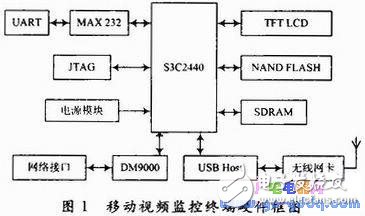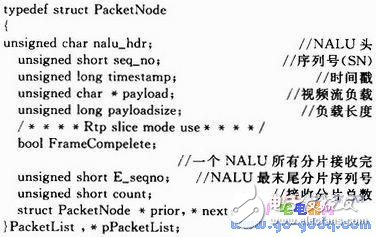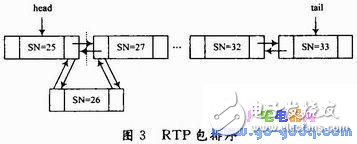Design of Mobile Video Surveillance Terminal for S3C2440+ Embedded Linux
As people's demands for the safety of living and working environments continue to increase, the importance of security is becoming more and more prominent. Video surveillance technology plays an increasingly important role in various fields, such as monitoring the scenes in real time through video surveillance for forests, tourist attractions, and urban communities. The embedded technology and wireless network technology are applied to the video monitoring terminal. Compared with the traditional wired video monitoring, the wireless video monitoring is free from the constraints of the network cable, and improves the flexibility and scalability of the video monitoring. The monitoring personnel can carry the handheld monitoring device without having to monitor the site at a fixed location.
In the wireless network environment, the huge amount of video information is unbearable for limited transmission bandwidth, which is one of the bottlenecks hindering its application. Therefore, high-efficiency video compression standards are needed to meet the requirements of wireless transmission bandwidth. New generation video compression standard H. 264 is a video image encoding and decoding technology for the Internet and wireless networks. It not only improves compression efficiency, but also increases network adaptability and reduces network bandwidth requirements. H. The 264 standard defines a video coding layer VCL (Video Coding Layer) and a network extraction layer NAL (Network AbstracTIon Layer). The video coding layer mainly adopts techniques such as intra prediction, inter prediction, transform and quantization, entropy coding and decoding to implement video compression, and the network extraction layer encapsulates the encoded data into a NALU unit to adapt to transmission in a wireless network.
The mobile video monitoring terminal takes the ARM microprocessor as the core and tailors the embedded Linux operating system suitable for video surveillance terminals. By providing a wireless network card to receive the monitoring front-end compressed video data, decoding and displaying the video stream sent by the monitoring front end, and displaying the front-end monitoring picture in real time. This article will focus on the video packet out-of-order and packet loss processing methods when using the RTP/UDP/IP protocol in the video transmission process, and H. on the ARM platform. Porting and implementation of the 264 decoder.
1 system hardware platformThe system hardware platform is mainly composed of embedded microprocessor, NANDFLASH, SDRAM, IEEE802.11 protocol wireless network card and LCD module. The microprocessor of this system selects the S3C2440 of Samsung ARM9 core, and the system clock adopts the working frequency of 400 MHz. The S3C2440 integrates a large number of functional units, including: the memory controller has 8 Bank intervals, LCD controller, USB controller and rich peripheral interface resources. According to the requirements of the video monitoring terminal, the peripheral circuits are based on this. Configuration and expansion. The hardware block diagram of the video monitoring terminal is shown in Figure 1.

The memory includes two parts: ROM and RAM. The ROM is equipped with a non-linear structure K9F1208UOM capacity of 64M & TImes; 8 b NAND FLASH chip; RAM is equipped with two HY57V561620BT-H SDRAM composed of 32-bit data bus, suitable for monitoring terminal processing large video data. demand. An external wireless network card based on the IEEE802.11 protocol is externally connected to the USB Host interface, and the front end video data is received through the wireless AP endpoint. The LCD screen uses a TFT true color LCD screen and is equipped with a corresponding touch screen for human-computer interaction.
2 system software designThe mobile video surveillance terminal software is designed with the embedded Linux operating system as the core. As an open source operating system, Linux has the characteristics of supporting multiple hardware platforms, rich device drivers and good network functions. The kernel is configured for the specific application of the monitoring terminal, and the appropriate system is tailored. The monitoring terminal application software is built on the operating system and is received under the RTP/UDP/IP protocol. The 264 video stream and the ffmpeg decoding library decode the video stream in real time.
2.1 H. 264 video stream transmission
2.1.1 Transmission mode selection
Real-time transmission of video requires a lower time delay and allows for a certain packet loss rate. Because the TCP handshake and the packet loss retransmission mechanism will cause certain delays, there are certain defects in the real-time monitoring system, and the UDP protocol is a non-linked and unreliable transport layer protocol, which has low resource consumption and transmission. The characteristics of fast speed, etc., occasional packet loss during video transmission will not have a big impact on the monitoring screen. The UDP protocol does not provide shortcomings such as packet subcontracting, encapsulation, and packet ordering. To ensure the reliability of video streaming, the network transmission part uses the RTP (Real-TIme Transport Protocol) real-time transmission protocol based on the UDP protocol. Connect to the front end through a socket to receive video stream data. RTP provides end-to-end data transfer services with real-time features, including definition of payload type, serial number, timestamp, and transmission detection control. The video stream encapsulation format based on RTP/UDP/IP protocol is shown in Figure 2.
2.1.2 Video streaming
When the RTP packet is transmitted by the UDP protocol, the out-of-order phenomenon occurs. The so-called out-of-order is that the order of the RTP packets received by the monitoring terminal may be inconsistent. Therefore, the received RTP packets are first sorted. A doubly linked list is stored in the memory to store the received RTP packets, and is stored in the linked list according to the sequence number of the RTP header. The doubly linked list structure is defined as follows, and some variables are used in the RTP fragmentation packet mode.

Whenever a new RTP packet is received, it searches from the end of the list and inserts it into the appropriate location according to the serial number. For example, an RTP packet with a serial number of SN=26 is allocated in the linked list and found at 25,27. Insert the package between the locations, and the RTP packet sorting process is shown in Figure 3.

Linear Array Sensor,Infrared Light Detector Device,Swir Linear Detector,Infrared Ingaas Sensor
Ningbo NaXin Perception Intelligent Technology CO., Ltd. , https://www.nicswir.com